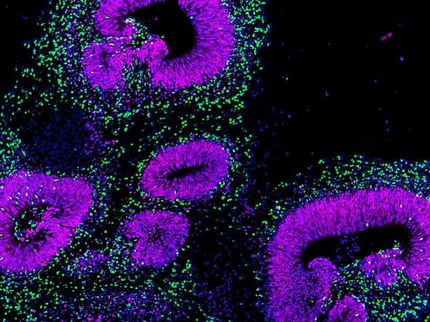'Runaway' development implicated in loss of function of the aging brain
The brain undergoes rapid growth and development in the early years of life and then degenerates as we progress into old age, yet little is known about the biological processes that distinguish brain development and aging. In a report published in Genome Research, researchers have identified a gene regulatory link between changes in the young and aging brain, describing "runaway” development as a potentially significant factor in age-related loss of function.
The brain grows and changes dramatically during the early years of life, with some developmental processes extending well into adulthood. In later years, the brain undergoes destructive changes, such as a drop in brain volume, synapse loss, and cognitive decline. While brain development and aging are areas of intense research, they are traditionally studied separately, and little is known about the boundaries between the two processes.
Underlying brain development is the complex and coordinated process of gene regulation. “In development, many genes are turned on and off by regulators, such as transcription factors and microRNAs.” said Mehmet Somel, postdoctoral researcher at the Shanghai Institutes for Biological Sciences. “The question is, do all of these regulatory processes cease once adulthood is reached, or are they still active in aging?”
Somel and an international team of researchers addressed this question by investigating messenger RNA (mRNA), microRNA, and protein expression changes in the prefrontal cortex of humans and rhesus macaque monkeys over the life span of each species. The prefrontal cortex is believed to be involved in functions such as complex behavior, personality, and decision-making.
The group found that distinct patterns of gene regulation in the prefrontal cortex do not stop at maturity, instead persisting into old age, a phenomenon that was observed for many different functional processes. One particularly striking example was the down-regulation of genes related to neuronal function.
Previous work has shown that neuronal genes gradually lose activity with age, attributed to an accumulation of damage in neuronal cells over a lifetime. Somel and colleagues have now shown that this process begins as early as three to four years of age, suggesting that these changes may be normal developmental regulation that continues long into old age. While this regulation is likely to be beneficial during development, at old age continuation of the gene regulation, or “runaway” development, might be detrimental.
Interestingly, they found the runaway neuronal development to be conserved in macaques, but it occurs an accelerated rate. Because the regulatory processes progress much faster, the authors suggest that this could be a significant contributor toward limiting the life span of macaques to only about one-third that of humans.
The authors caution that aging is a very complex process stemming from many contributing factors, but explain that their work suggests runaway development may be a significant contributor to age-related decline.
Why has evolution not eliminated such a potentially harmful process? Philipp Khaitovich of the Shanghai Institutes for Biological Sciences and senior author of the study explained that detrimental effects experienced during old age could spread throughout and fix within populations, especially when those effects are beneficial early in life.
"Evolutionarily, species are optimized to reproduce and ensure survival of the next generation, not to live as long as possible as individuals," said Khaitovich. "In fact, long lifespan precludes rapid genetic adaptations to changing environment."
Khaitovich added that as they now begin to understand the biological consequences of this evolutionary feature, researchers may find ways to shift the balance from early reproduction to individual longevity and enhanced health at old age.
Scientists from the Shanghai Institutes for Biological Sciences, the Max Planck Institute for Evolutionary Anthropology, La Trobe University, the Max Delbrück Center for Molecular Medicine, and the Max Planck Institute for Molecular Genetics contributed to this study.
Original publication: Somel M, Guo S, Fu N, Yan Z, Yang Hu H, Xu Y, Yuan Y, Ning Z, Hu Y, Menzel C, Hu H, Lachmann M, Zeng R, Chen W, Khaitovich P.; "MicroRNA, mRNA, and protein expression link development and aging in human and macaque brain."; Genome Res 2010.





















































